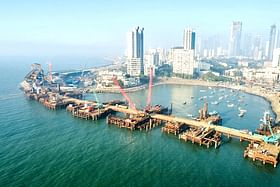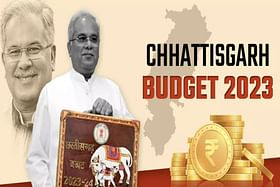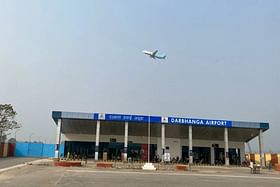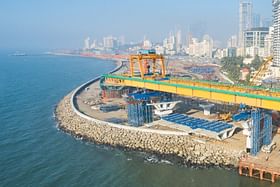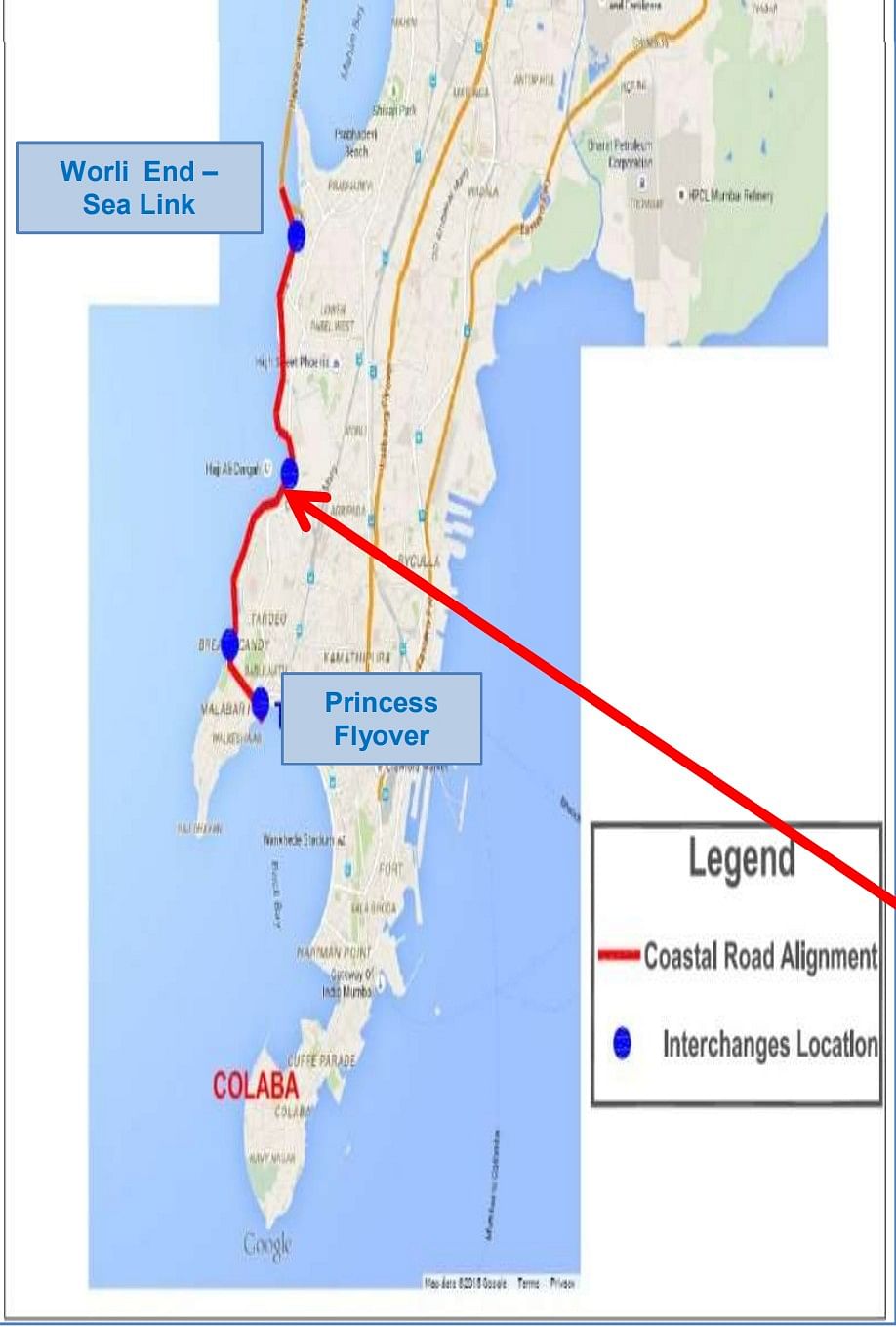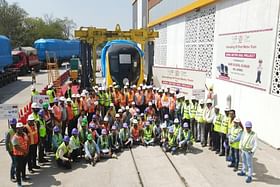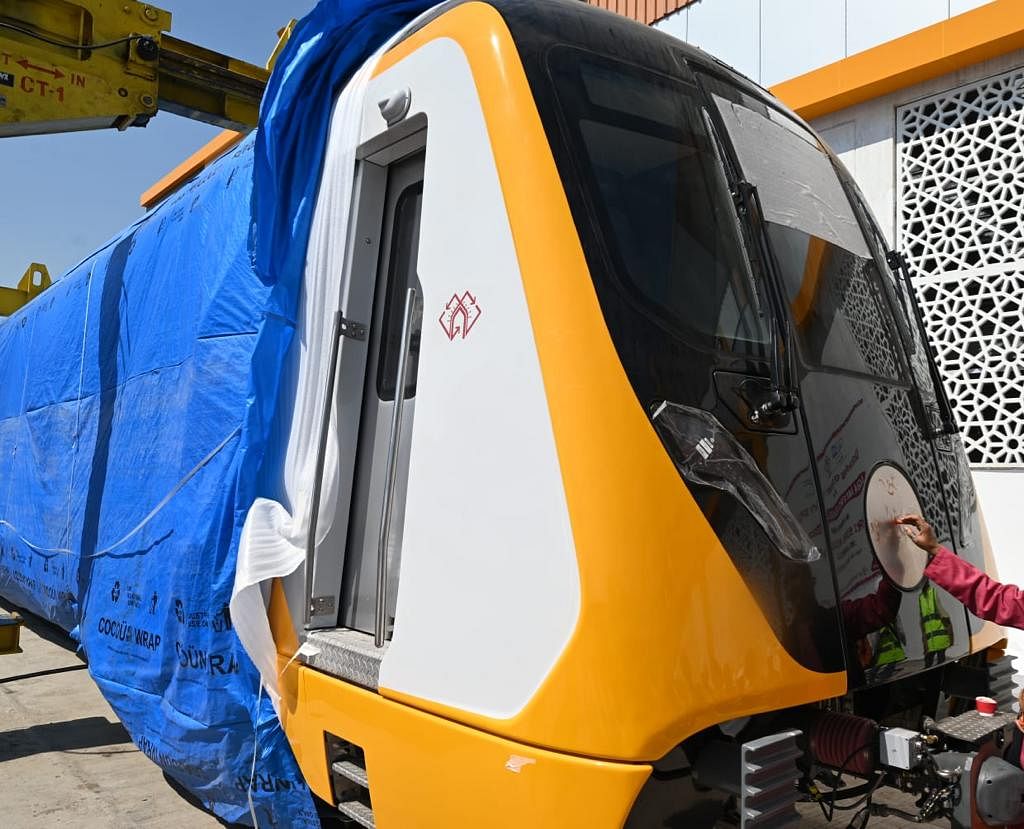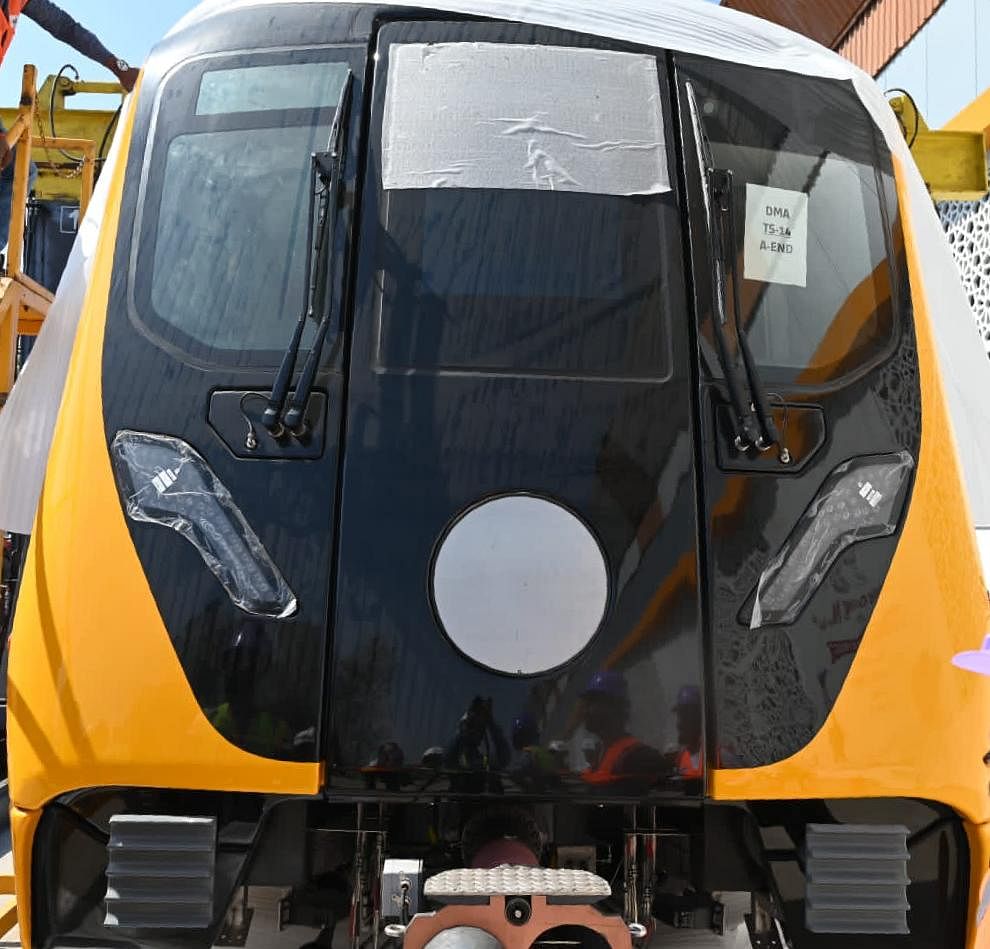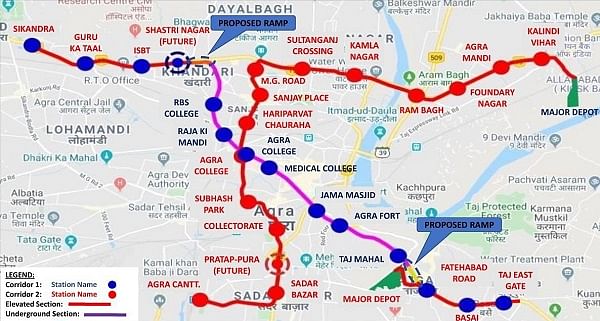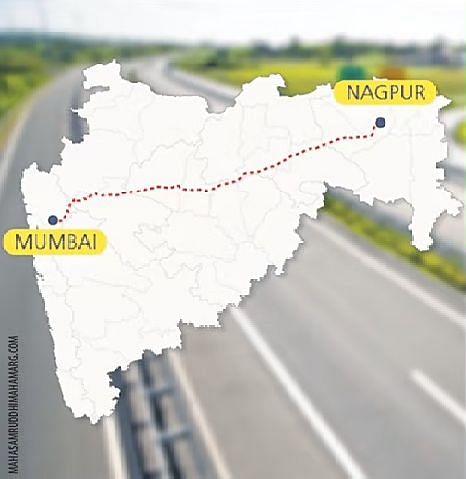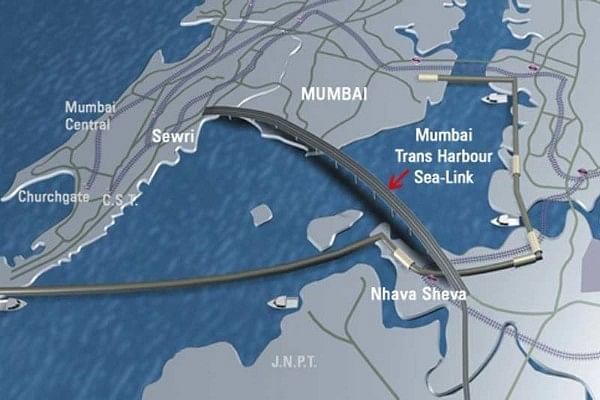Maharashtra now has the physical and digital infrastructure essential for achieving balanced, inclusive and sustained economic growth according to the State’s annual Economic Survey.
The Economic Survey 2022-23 was tabled by Deputy Chief Minister and Finance Minister Devendra Fadnavis in the State Assembly on 8 March.
The State is well connected through railways, roadways, airways and waterways and is one of the highly urbanised states in India.
Extending infrastructural facilities is only part of the story; modernisation is the other important principle that is being attempted with verve and achieved with commendable speed.
Road Network
At the end of March 2022, the state had a total road length of about 3.24 lakh km, including 18,366 km of national highway network, noted the survey.
A total of 30 programme worth Rs 25,228 crore are under implementation as part of Bharatmala Pariyojana to bridge critical infrastructure gaps in the State. This includes Sant Tukaram Palkhi Marg, Sant Dnyaneshwar Palkhi Marg and Vadodara-Mumbai Expressway.
The Survey mentions a list of ongoing projects undertaken by the state government for development of road infrastructure mainly through private participation.
This includes Versova- Bandra Sea link project, Versova – Virar Sea link project, Pune ring road, Thane creek bridge, Mumbai – Pune Expressway augmentation, Konkan Greenfield Expressway and Jalna – Nanded Expressway.
While most of these projects will be complete by 2025-26, the Rs 6,700 crore augmentation of Mumbai-Pune expressway is expected to be over by next year.
Similarly, the entire length of Samruddhi Mahamarg is expected to be operational by 2024.
Officially known as Hindu Hruday Samrat Balasaheb Thackeray Maharashtra Samruddhi Mahamarg, the 701-km-long expressway connects Mumbai and Nagpur.
Upto January 2023, about 90 per cent of work is completed on eight-lane expressway. The survey noted that the 520 km long Nagpur-Shirdi stretch of Samruddhi Mahamarg has been completed and opened to traffic from December 2022.
Projects In Mumbai Metropolitan region
Mumbai Metropolitan Region (MMR) comprises of entire area of Mumbai City, Mumbai Suburban and parts of Thane, Raigad and Palghar districts.
According to the survey, a number of new projects will be commissioned in the MMR region this year.
This includes first phase of Santacruz-Chembur Link Road (SCLR) from Kurla to Vakola, Mumbai Trans-Harbour link (MTHL) and flyover at Kalanagar Junction and Bandra East.
The survey notes that work on Rs 17,843 crore MTHL project which involves construction of bridge across the sea from Sewri to Nhava (22 km) is in full progress.
Similarly, 70 per cent of work on the Rs 12,721 crore Mumbai Coastal Road Project (South) is complete as of January 2023, as mentioned in the survey.
The project involves connecting Princess Street flyover in Navi Mumbai to Worli end of Bandra Worli Sea Link (BWSL) through a series of roads and undersea tunnels.
Railways
According to the Economic Survey, the state has a railway route length of 6,242.14 km, which is 9.2 per cent of the total railway route length (68,042.81 km) of India.
The Survey mentions some of the on-going railway works in the state. This includes doubling of Pune-Miraj-Lodha line (80 per cent complete), new line between Wardha-Nanded via Yavatmal-Pusad and third line between Itarsi-Nagpur (24 per cent complete).
Indian Railways is also working on the Detailed Project Report (DPR) for 368 km Indore-Malegaon-Manmad line and 265 km Pune-Nashik line.
Mumbai Suburban Railway
The ubiquitous Mumbai suburban railway system utilised a fleet of 229 local trains including 6 AC local trains to carry on an average 34.5 lakh passengers during 2021-22.
For a linear city like Mumbai, the suburban train services play a vital role in facilitating the north-south movement of the city’s workforce.
The two suburban systems operated by both the Western Railways (WR) and the Central Railways (CR) facilitate inter-district travel in five districts namely Mumbai, Mumbai Suburban, Thane, Palghar and Raigad
A worrisome trend noted in the Survey is the increase in number of accidental deaths and persons injured on Mumbai suburban railway. 2,078 people have died until October 2022, an increase of 19 per cent from 1,752 deaths reported in 2021 and 1,689 injured in 2022, up from 1,106 in 2021.
Trespassing of suburban railway tracks and falling down from train together accounted for more than 73 per cent of total accidental deaths reported during the year 2022.
Metro Rail
According to the Survey, Metro rail projects are currently operational in three cities — Mumbai, Pune and Nagpur.
The Mumbai Metro Rail serving the Mumbai metropolitan region has three operational lines — 1, 2A and 7. The two new lines 2A (Dahisar to Andheri West DN Nagar) and 7 (Dahisar East to Andheri East) was inaugurated on 20 January this year and has been a runaway success.
The Economic Survey notes that nine metro lines are currently under construction in Mumbai — line 2B (D.N. Nagar-Mandal), line 3 (Colaba-Bandra-SEEPZ), line 4 (Wadala-Ghatkopar-Thane-Kasarwadavli), line 4A (Kasarwadavli-Gaimukh), line 5 (Thane-Bhiwandi-Kalyan), line 6 (Swami Samarth Nagar-Vikhroli), line 9 (Dahisar (E)-Mira Bhayandar to Andheri), line 10 (Gaimukh to Shivaji Chowk), line11 (Wadala to CSMT) and line 12 (Kalyan to Taloja).
The State Government is also implementing 11.10 km Navi Mumbai metro rail project through CIDCO. The elevated line from CBD Belapur to Pendhar with 11 stations is expected to start soon.
In Nagpur, two metro corridors with a length of 40.02 km and 38 stations have been commissioned.
The two routes — Khapri to Automotive Square (North-South corridor) and Lokmanya Nagar to Prajapati Nagar (East-West corridor) — together had an average ridership of one lakh passengers per day during 2022-23.
Airports
The Survey stated there are 13 airports functioning in the State, including five international airports at Mumbai, Pune, Nagpur, Aurangabad and Nashik.
During 2021-22, the passenger traffic from domestic and international airports in the State was 245.65 lakh and 32.12 lakh respectively, whereas the corresponding figures for 2020-21 were 133.96 lakh and 12.23 lakh respectively.
The top three airports in term of passenger traffic in the year 2022 are Mumbai, Pune and Nagpur, noted the survey.
Similarly, during 2021-22, domestic and international cargo handled by airports in the State was 2.51 lakh MT and 5.57 lakh MT respectively. The corresponding figures for 2020-21 were 1.87 lakh MT and 4.41 lakh MT respectively.
To reduce air-traffic congestion at Chhatrapati Shivaji Maharaj International Airport, an additional international airport is being built at Navi Mumbai through Public Private Partnership in four phases.
It is one of the largest greenfield airports planned to handle minimum six crore passengers and 15 lakh MT cargo per annum.
Ports
The state has two major ports — Mumbai Port and Jawaharlal Nehru Port (JNPA) and 48 non-major ports.
During 2021-22, total cargo traffic handled by major and non-major ports in the State was 1,883.59 lakh MT as against 1,579.11 lakh MT during the previous year.
Similarly, Roll on-Roll off (ro-ro) services have been started at New Bhaucha Dhakka (Mumbai)-Mandwa (Raigad) and Agardanda-Dighi in Raigad district, noted the survey.
Roll-on/roll-off ships are vessels that are used to carry wheeled cargo such as cars, trucks, semi-trailer trucks, trailers and railroad cars that are driven on and off the ship on their wheels or using a platform vehicle.
Work is in progress to start ro-ro services between Karanja-Rewas in Raigad district, Bhayander (Thane)-Vasai (Palghar), Naringi – Kharvadeshri in Palghar district, Marve-Manori in Mumbai suburban, Bhaucha Dhakka (Mumbai) – Kashid (Raigad), Gorai- Borivali in Mumbai suburban and Bhaucha Dhakka (Mumbai)-Mora (Raigad).
The much-awaited water transport service from Belapur in Navi Mumbai to Elephanta (Raigad) has also started, said the Survey.
Electricity
As on 31 March 2022, the State has highest share in installed capacity (10.9 per cent) of electricity generation at All-India level.
The survey noted that per capita ultimate consumption of electricity for the State is 1,110.2 units as against 824.6 units for All-India.
During 2022-23 upto October, average peak demand for electricity was 22,339 MW and supply of electricity was 22,441 MW. Compared to this, the average peak demand for electricity was 21,221 MW and supply was 21,750 MW last fiscal.
The state is also a leader in renewable energy and ranks fifth in India after Rajasthan, Gujarat, Tamil Nadu and Karnataka in terms of installed capacity of renewable energy. As on 31 December 2022, the installed capacity was 11,400 MW.
Well developed infrastructure, abundant natural resources, connectivity to all major areas, skilled manpower and quality education make Maharashtra an ideal destination for setting up of new industries, stated the survey.
